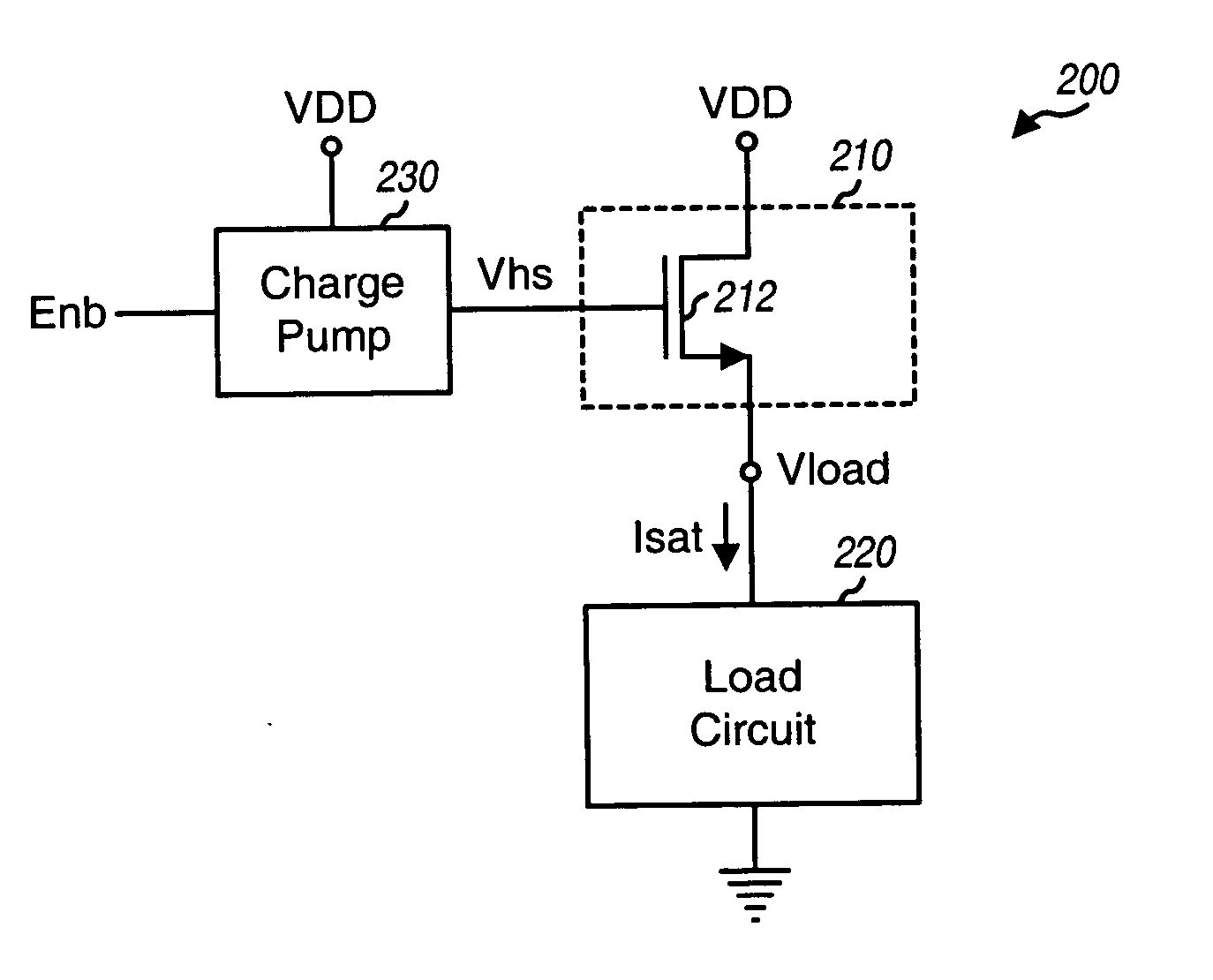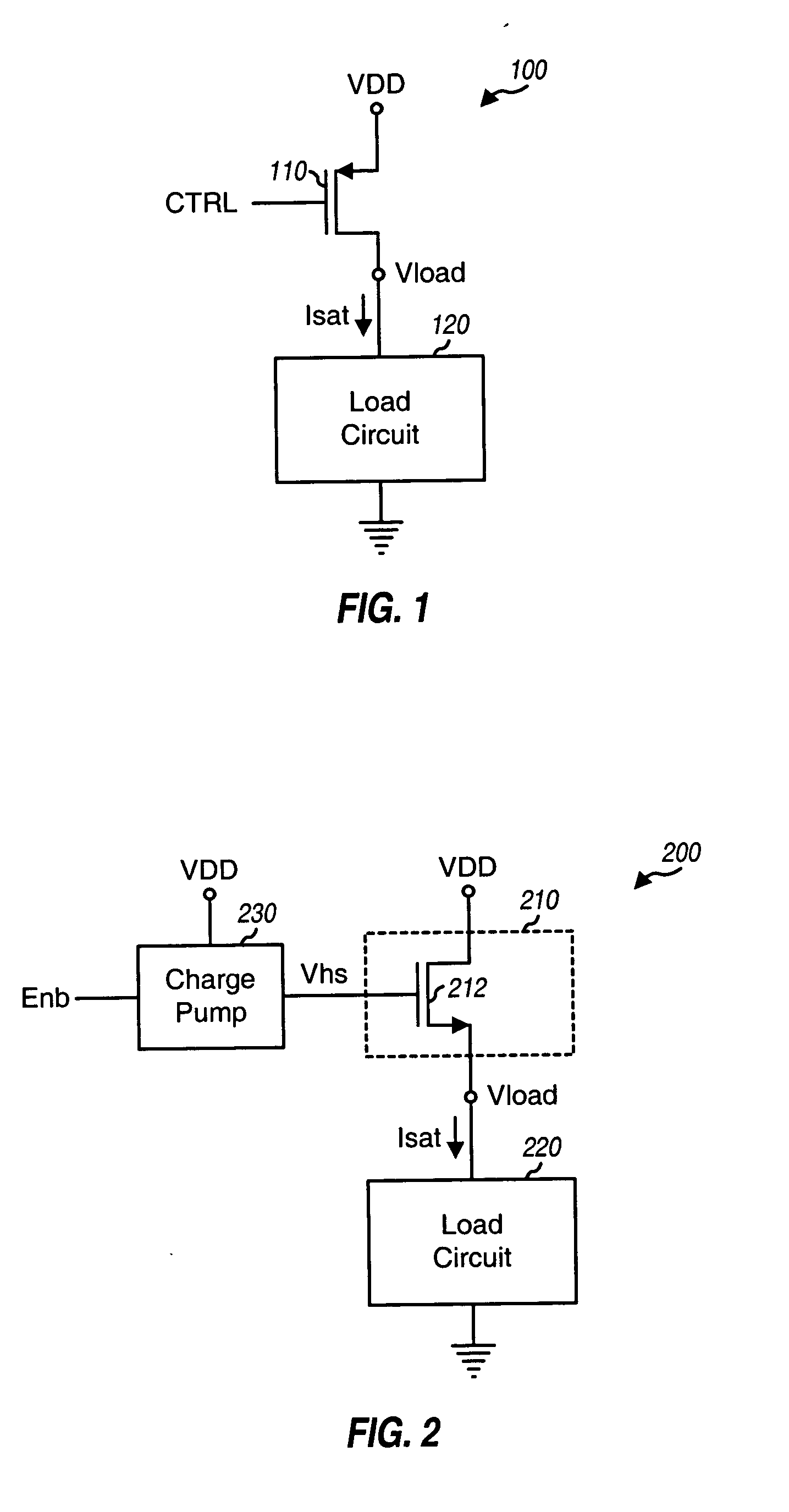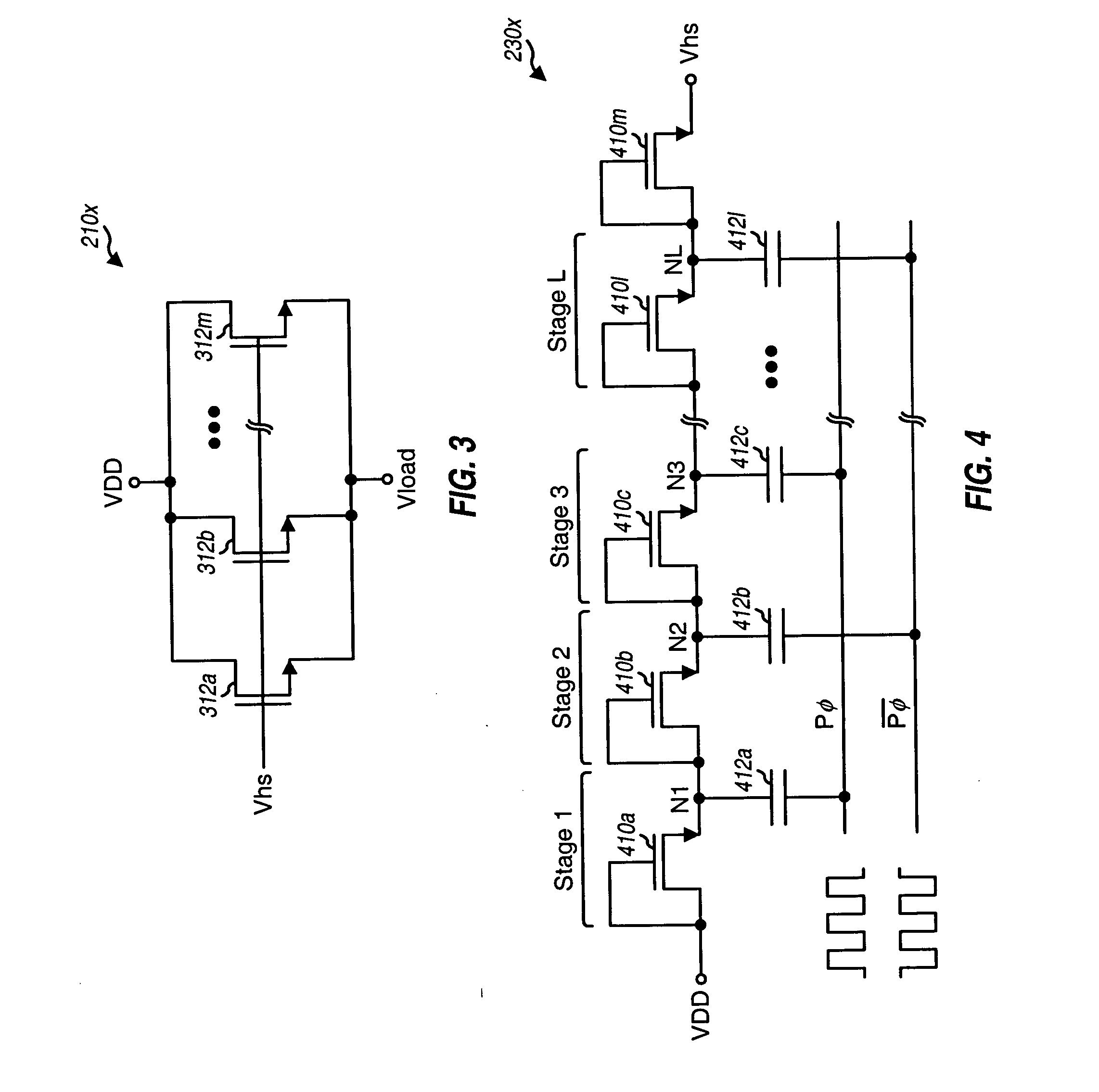Low-power, low-area power headswitch
a power head and low-area technology, applied in the field of circuits, can solve the problems of increasing the delay of transistors, reducing the power of transistors, so as to improve the performance, improve the mobility of n-channel fet, and reduce the leakage curren
- Summary
- Abstract
- Description
- Claims
- Application Information
AI Technical Summary
Benefits of technology
Problems solved by technology
Method used
Image
Examples
Embodiment Construction
The word “exemplary” is used herein to mean “serving as an example, instance, or illustration.” Any embodiment or design described herein as “exemplary” is not necessarily to be construed as preferred or advantageous over other embodiments or designs.
FIG. 1 shows a schematic diagram of an electronic circuit 100 with a conventional P-FET headswitch. Circuit 100 includes a P-FET device 110 coupled to a load circuit 120. P-FET device 110 implements the P-FET headswitch. P-FET device 110 has a source that couples to a power supply, VDD, a gate that receives a control signal CTRL, and a drain that provides a load supply, Vload. Load circuit 120 couples between the load supply and circuit ground.
As used herein, a “load circuit” is a circuit comprised of at least one FET device (i.e., N-FET and / or P-FET devices) and configured to receive power via a headswitch. The load circuit is powered on when the headswitch is enabled and powered off when the headswitch is disabled. The load circui...
PUM
 Login to View More
Login to View More Abstract
Description
Claims
Application Information
 Login to View More
Login to View More - R&D
- Intellectual Property
- Life Sciences
- Materials
- Tech Scout
- Unparalleled Data Quality
- Higher Quality Content
- 60% Fewer Hallucinations
Browse by: Latest US Patents, China's latest patents, Technical Efficacy Thesaurus, Application Domain, Technology Topic, Popular Technical Reports.
© 2025 PatSnap. All rights reserved.Legal|Privacy policy|Modern Slavery Act Transparency Statement|Sitemap|About US| Contact US: help@patsnap.com



